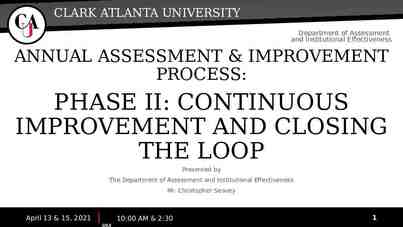CHAPTER 1 Introduction: Definitions and History Introduction
17 Slides366.50 KB
CHAPTER 1 Introduction: Definitions and History Introduction to Industrial/Organizational Psychology by Ronald Riggio
What is Industrial/ Organizational Psychology? Psychology is the study of behavior and mental processes. Industrial/organizational (I/O) psychology is the specialty area within psychology that is concerned with: The study of behavior in work settings. The application of psychology principles to change work behavior.
The Science and Practice of Industrial/Organizational Psychology I/O psychology has two objectives: 1. To conduct research in an effort to increase our knowledge and understanding of human work behavior. 2. To apply that knowledge to improve work behavior, the work environment, and the psychological conditions of the worker.
The Roots and Early History of Industrial/Organizational Psychology Around the turn of the 20th century, Frederick Taylor, an engineer, believed that scientific principles could be applied to the study of work behavior. Scientific management, a movement started by Taylor, was a method of using scientific principles to improve the efficiency and productivity of jobs.
The Roots and Early History of Industrial/Organizational Psychology Taylor developed time-and-motion studies procedures in which work tasks are broken down Into simple component movements timed Designed to develop a more efficient method for performing the tasks.
The Roots and Early History of Industrial/Organizational Psychology During World War I, Robert Yerkes worked with the U.S. Army to develop intelligence tests for army recruits. The Army Alpha and Beta tests represented the first mass testing efforts.
The Great Depression Years and World War II Because of the economic depression during the 1930s, fewer opportunities existed for industrial psychologists. However, a group of Harvard psychologists conducted studies at the Western Electric Company in Hawthorne, Illinois.
The Great Depression Years and World War II Elton Mayo and his colleagues examined the effects of the physical environment on worker productivity. In one particular study, they examined the effect of lighting on worker productivity. Results of the study found that productivity increased regardless of level of lighting.
The Great Depression Years and World War II The Hawthorne effect refers to changes in behavior occurring Because participants know that they are being observed Because of role expectations as research participants.
The Great Depression Years and World War II The human relations movement was a movement based on the studies of Elton Mayo that emphasizes the importance of social factors in influencing work performance. “Worker morale”
The Great Depression Years and World War II World War II contributed greatly to the growth of I/O psychology. State-of-the-art machinery lead to a need for human factors psychologists. The Army General Classification Test was developed.
Industrial/Organizational Psychology Today and in the Future
Industrial/Organizational Psychology Today and in the Future Four Trends First trend: The changing nature of work Organizational downsizing refers to the strategy of reducing an organization’s workforce to improve organizational efficiency and/or competitiveness. Second trend: Expanding focus on human resources Competition for highly-skilled workers Growing number of low-skilled workers in the service industry
Industrial/Organizational Psychology Today and in the Future Third trend: Increasing diversity in the workforce Workforce is becoming more diverse Women make up two thirds of all entering workers in the labor market. Ethnic minority group members make up one third of all entering workers.
Industrial/Organizational Psychology Today and in the Future Fourth trend: Increasing globalization of business More businesses are focusing on the global economy. Potential issues for worker training
http://Shehria.weebly.com






















